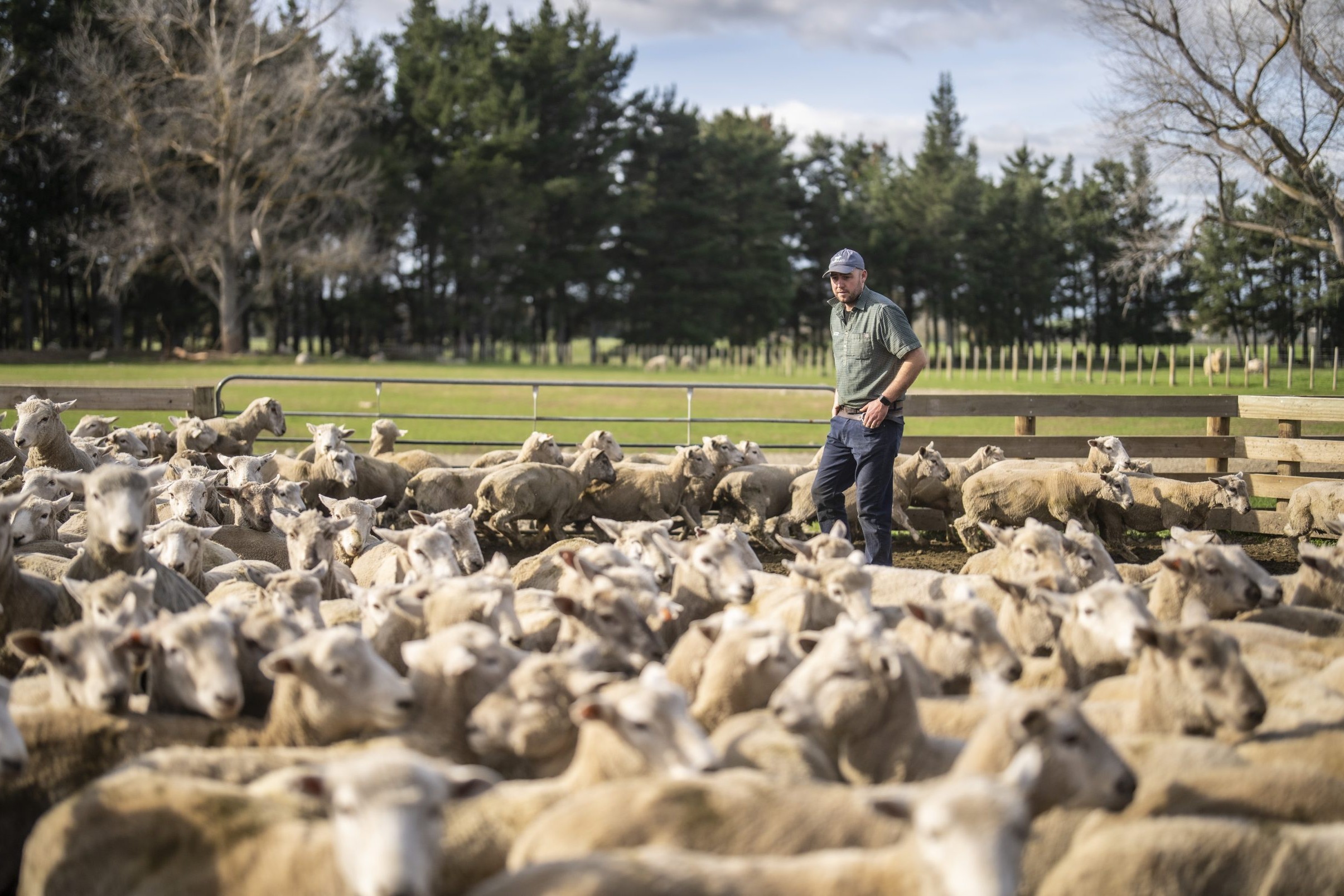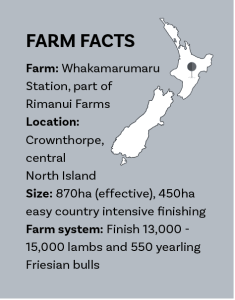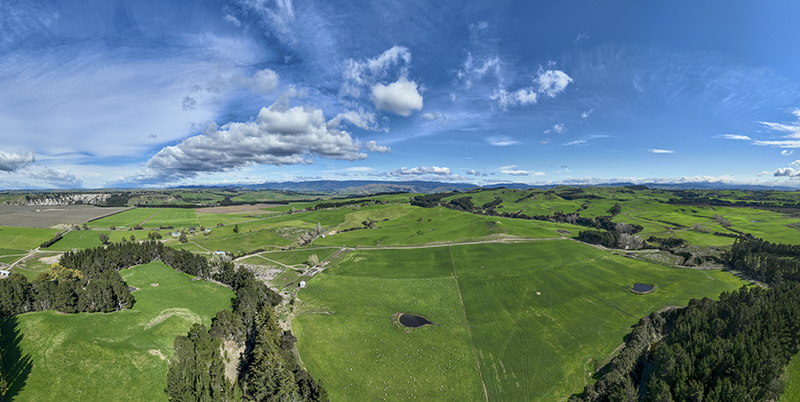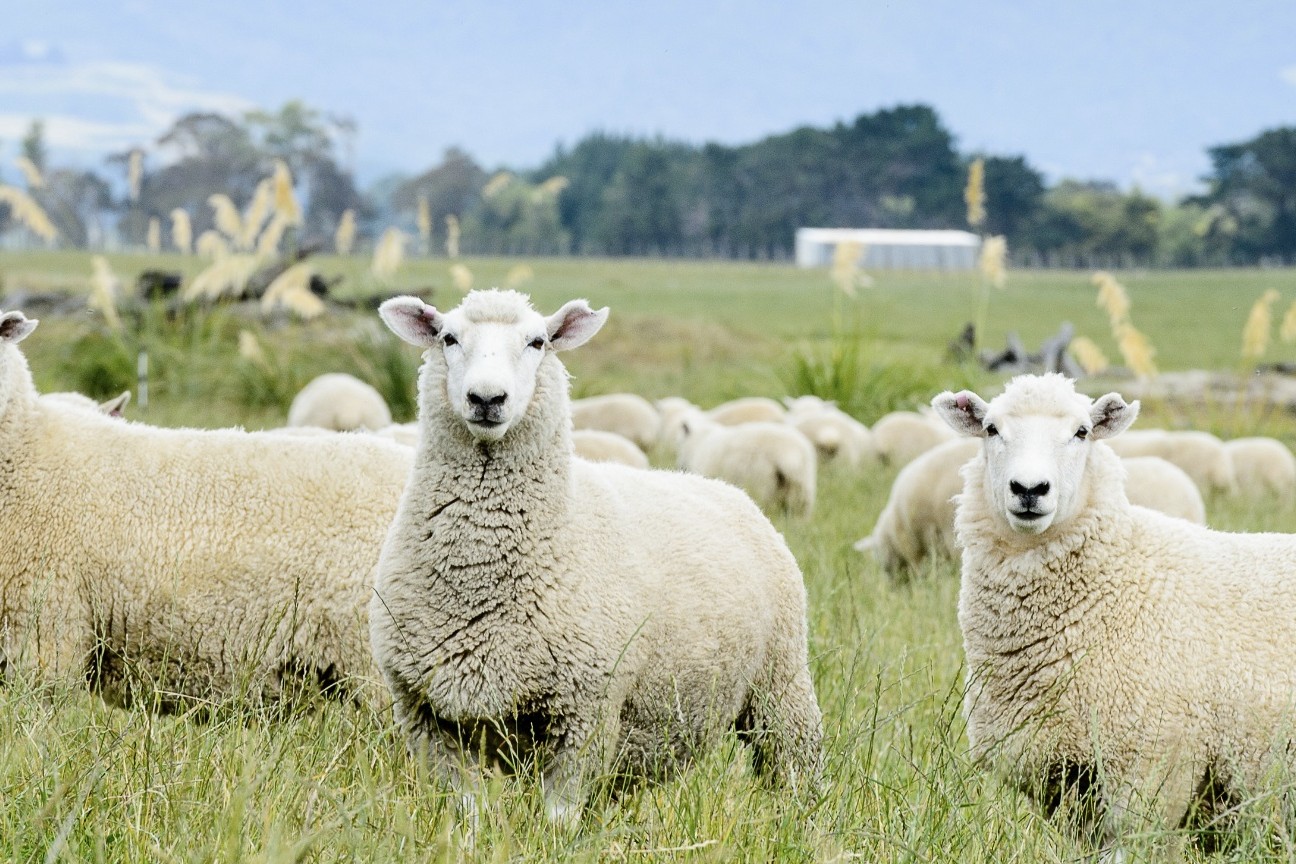Turning around triple drench resistance
When testing revealed triple drench resistance, station manager Charles Yule knew he had to consider changes to the property’s management strategy.
Words Tony Leggett, Photos John Cowpland, Alphapix Photography.

 Charles Yule has been managing Whakamarumaru Station since it was bought by a large-scale private farming business Rimanui Farms Limited in March 2021 with the intention of the station to finish lambs bred on other Rimanui Farms properties to better weights and utilise the typically ‘growthy’ Hawke’s Bay spring to exit them before it turns dry.
Charles Yule has been managing Whakamarumaru Station since it was bought by a large-scale private farming business Rimanui Farms Limited in March 2021 with the intention of the station to finish lambs bred on other Rimanui Farms properties to better weights and utilise the typically ‘growthy’ Hawke’s Bay spring to exit them before it turns dry.
Of the 870ha effective, 450ha is cultivable easy country set up as an intensive finishing unit for 13,000 to 15,000 lambs to graze on a mix of forage crop and clover-rich pasture. The Station’s 180ha of medium hill country is grazed by a herd of 250 cows and their progeny are sold as weaners. These are mated to Charolais bulls. In the dry summer of 2024, the other properties couldn’t hang on to their lambs for long enough to fit the buying cycle for the lamb unit, requiring some lambs to be purchased elsewhere in addition to grazing some replacement hoggets for the stations.
About 25% of the lambs begin arriving in February, initially grazing around 80ha of Kestrel kale grown annually at a cost of $800/ha, before moving into clover-rich pasture.
The majority of the lambs arrive in late-March-April to spell the pasture area of the lamb unit and reduce the risk of dry summer conditions impacting pasture growth and lamb performance.
Around 550 yearling Friesian bulls are brought in from early September each year and are mostly finished in a cell system in one corner of the farm before being killed the following November-December. Before entering the cell system, they graze through the lamb finishing area to reduce worm contamination for the lambs coming soon after.
“We aim to buy them in at 240-270kg liveweight and they come initially into the lamb platform as we’re killing the last of the lambs, and then they move into the bull unit where they remain until slaughter as two-year-olds,” explains Yule.
‘A big part of our system is spelling the lamb platform for the summer months to the start of autumn by grazing those older ewes through that time.’ – Charles Yule, Farm Manager, Whakamarumaru Station (Rimanui Farms)
Once grazed off, the crop area is sown in Mohaka ryegrass and clover which is delivering three to four years of an excellent lamb finishing diet. “So far so good with the Mohaka and clover, but we’ve had quite kind summers until this past one. It’s realistic to think we might only get three years from it, but I’m hoping for four.”
Yule now aims to buy-in lambs that are 33kg minimum liveweight because they handle the transition to kale better than lighter weight lambs and continue to grow at higher daily weight gain levels.
Land is earmarked for spraying off for kale through August and September as the last of the prime hoggets are leaving the station. Yule aims to sow the kale area in stages from 01 October to create a more manageable flow of crop for lambs to come on to from February the following year.

Last February, he also started tagging about 15% of the lambs arriving on the station with electronic identification tags (EID) so he could monitor the individual growth rates of lambs within each mob on the crop.
He found that heavier lambs, over 35kg, grew at 150g/day on the kale crop, compared with 60-80g/day for lambs 33-34kg. “But anything under 32kg were basically losing weight on the crop, which was a surprise because a lot of people think cheap, lighter lambs should go well on a brassica.”
Last year, the average carcase weight of male and ewe lambs leaving the station’s finishing unit was 22.5kg from a liveweight averaging around 50kg. Male lambs typically range from 23.5-25kg carcase weight and ewe lambs 21-23kg.
“The only reason we worked it out was via the EID tagged lambs. If we had just done a mob weight, we would have come in at 60 grams a day over the whole mob and we would have been thinking that’s pretty average but they gained a little bit of weight.
“But until we weighed them five ways with the EIDs and then looked at the growth rates for each bracket, it was those light lambs that lost a lot of weight.”
“So, pushing out the purchase weight for the crop land’s lambs is quite important. Yule says the cost of the EID tags was justified given the size of the operation and that one set of data has highlighted an opportunity to improve the lamb finishing unit’s profitability. He says it’s also been good information for the wider group of farms to consider too because the managers are all buying maternal rams from different places so they are looking at the different performance from their rams.
Grazing policy for parasite management
Before any lambs enter the finishing system at Whakamarumaru Station, the area is grazed by mixed-age ewes bought in from another Rimanui Farms property on a short-term trade.
These ewes are mated and sold in-lamb in June and most importantly provide a valuable refugia component within the lamb finishing area.
“Each year, the 80-100ha earmarked for cropping is sprayed and direct-drilled with Kestrel kale to create a large area of worm-free grazing for lambs arriving in February. “We have found Kestrel kale to be a reliable palatable feed for lambs. We start buying lambs in February and they go straight on to the kale so that means we have no lambs on our (pasture-finished) lamb platform from when we finish killing the last of our hoggets in November until about early April.
“This season, we’ve made changes to our system in terms of the type of lamb we have procured. We targeted better (heavier) lambs and had them for a shorter time onfarm.”
Buying later also means less drenching is required. Yule is using the individual weight gain data from the EID tagged lambs and their Faecal Egg Count (FEC) data to help determine drenching intervals.
If lambs are growing well, but have a high FEC, he may extend the interval. He says FECs are a great tool to indicate a trend, but stockmanship, diet, weather and condition, all play a big role in the decision to drench.
Rather than drenching on a pre-set timetable, Yule and his staff prefer to observe stock and gather FEC samples for analysis by the veterinarian before making a call to drench a mob.
They are wary of over-stretching the interval between drenches, and risking infecting pasture with a heavy worm burden for later lambs to cope with.
There’s also a trade-off of what stock classes are coming in behind them. I think you’ve just got to look at these systems more on a mob basis than the whole farm before considering when lambs get drenched.”

Charles’ Kellogg report “Surviving drench resistance”
The Central North Island station manager was overwhelmed by the volume of scientific research papers written on the broader topic while writing his Kellogg report Surviving Drench Resistance in 2023, but he is also surprised by the lack of awareness of the findings among his peers.
Until the more recent surge in farmer extension work by veterinarians along with Wormwise, reinvigorated by its national coordinator Ginny Dodunski, Yule says farmer awareness of the impacts it causes and strategies to deal with drench resistance has been slow to build.
In spite of the volume of scientific work, Yule still found an astounding omission in the literature with respect to the financial burden with too many farmers unaware of the significance of resistant parasites reducing performance within their flocks.
There are estimates suggesting the cost of triple drench resistance is just over $80,000 for a 4000-ewe flock. He is concerned the advice that is available still needs to be tailored to an individual farm level. As blanket recommendations are risky when it comes to battling through a resistant worm issue.
What may work in one farm system on one property, may not achieve the same result next door where subtle differences in stock management or marketing strategies create unique farm challenges for worm management.
Yule discovered failing drench performance in his own lamb finishing system about 18 months ago and says he expects it will take several years to overcome in spite of changes made to the management of stock and animal health protocols.
‘You would hear warning shots and stuff about drench resistance for years. We sort of parked it in the back of our brains and then, all of a sudden, we’re sort of kicking ourselves thinking why didn’t we front foot this.’ – Charles Yule, Farm Manager, Whakamarumaru Station (Rimanui Farms)
As he gathered knowledge to complete his report, Yule interviewed several farmers about their own drench resistance knowledge.
To his surprise, only one of the farmers interviewed was seriously considering the challenges posed by resistant worms in sheep before testing revealed his own sheep flock had triple drench resistance. “Few people have been FEC testing when they drench, then testing 10 days to check the drench is effective.”
He is pleased to see veterinarians engaging with their farmer clients and praises the work done by Wormwise, the national awareness programme funded by Beef + Lamb New Zealand.
He would like to see more consistency in the messaging delivered by veterinarians and drench sales staff who don’t always align in their advice. His advice to farmers is to avoid inducements to buy one product over another and always consult their animal health advisor first. Yule would also like to see more research into triple drench resistance that focuses on practical advice for farmers to adopt, regardless of their individual farm system. He’s particularly keen to see analysis of the financial impact of triple drench resistance across a range of farm systems, so farmers can see the hidden costs of it. “I’d like to see a before-and-after resistance case study and think every sheep farmer would love to read that too. It would be a warning shot for a lot of farmers.
“I know some farmers will look at our system and say you’ve got all this easy country that you can use to grow crop on and that’s true, but if you don’t have cropping country, you can still integrate cattle into your lamb grazing, you can minimise the time lambs stay on farm because we know young animals are impacted much more by worms.
“So, regardless of whether you’re farming strong wool sheep in Hawke’s Bay or Merinos in the Maniototo, there are options for dealing with triple drench resistance.”
Charles’ Top Recommendations
- Do a Faecal Egg Count (FEC) before drenching to identify the worm challenge present and a Faecal Egg Count Reduction Tests (FECRT) to check the efficacy of the drench, 10 days after drenching.
- Engage support into your farming businesses from external advisors who specialise in the field of drench resistance, ideally using more than one from different companies for unbiased advice.
- Implement changes to your farming system where appropriate to enable a sustainable farming business like your sheep to cattle ratio or grazing management.
- Industry must drive the development more effective onfarm testing for FECRTs, larvae culture testing, and larvae level testing in pasture.
CLICK HERE to read Charles Yule’s Kellogg report which highlights the options farmers have, regardless of their farm system, to overcome triple drench resistance.




